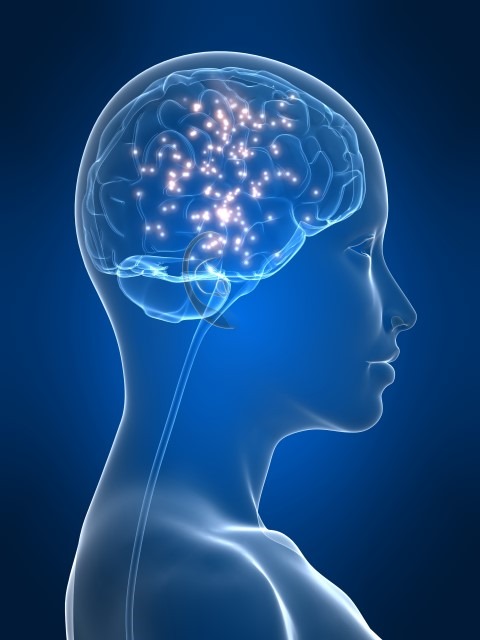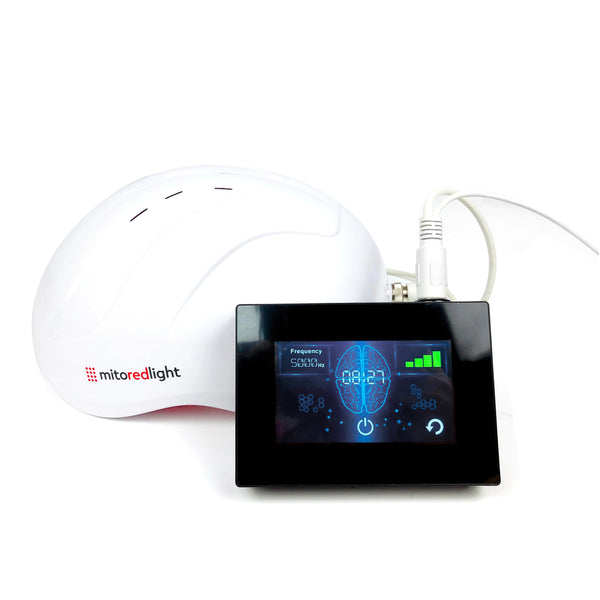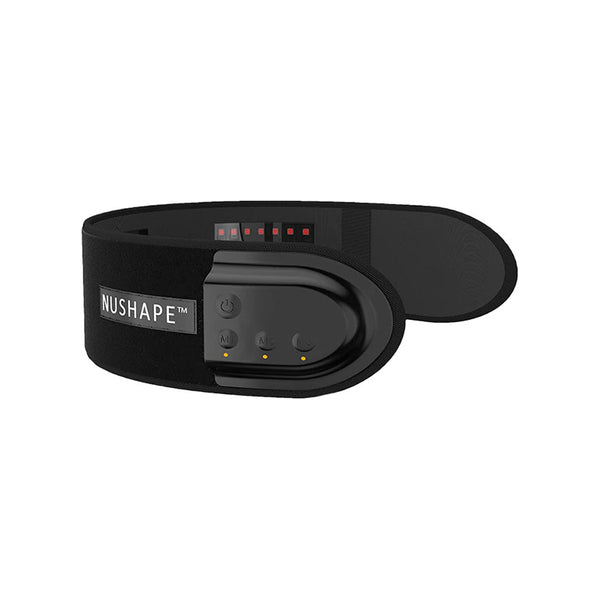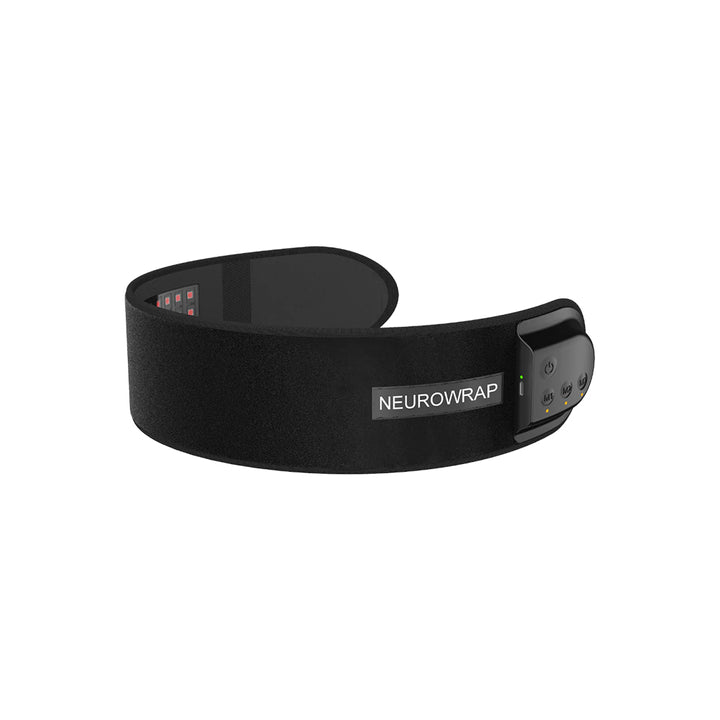Red Light Therapy, An Innovative Approach to Neurological Wellness
As the understanding of the human brain continues to evolve, the exploration of non-invasive treatments like red light therapy (RLT) has become a focal point for many researchers and practitioners. Red light therapy, although a relatively new contender in the realm of neurological treatments, is backed by a growing body of scientific evidence suggesting its potential benefits for brain health.
The mechanism behind RLT's efficacy lies in its ability to penetrate the skull and reach the brain, promoting increased cellular metabolism and reduced inflammation. The implications of this are profound: improved cognition, reduced symptoms of depression and anxiety, and even potential benefits in the management of neurodegenerative conditions like Alzheimer's and Parkinson's disease. Its non-invasive, drug-free nature coupled with the absence of side effects makes RLT an exciting therapy that is poised for exponential growth in the coming years.
In the world of medical advancements, it's crucial to stay abreast of the latest technologies, especially when they promise such transformative results. Recognizing the significant potential of RLT for neurological conditions, we have delved deep into the realm of specialist devices designed specifically for brain health. Many of these devices, harnessing cutting-edge technology, are safe for home use, making the therapy more accessible than ever. Stay tuned as we share our insights and findings on the best devices available in the market.
The exponential growth in the interest surrounding RLT for neurological conditions is undeniably attributed to its safety, efficiency, and the convenience of being a drug-free intervention. As this field continues to evolve, we've taken it upon ourselves to investigate the plethora of devices tailored for brain health. Many of these harness the latest technology and are designed for secure home use. We're excited to share our findings and recommendations, ensuring you're equipped with the best tools for optimal brain health.
Let's explore the best red light therapy devices for Brain Health that truly stand out in terms of efficacy and value:
Points to keep in mind when deciding on the best red light therapy device for Brain Health:
Wavelength & Brain Health:
Red Light Therapy (RLT) is increasingly recognized for its potential neuroprotective and regenerative effects. Below are the specific wavelengths that show promise in supporting brain health and addressing various neurological conditions:
610-630nm
- Primary Benefits: Promotes cerebral blood flow and assists in recovery processes.
- Specifically Addresses: Recovery from traumatic brain injuries.
660nm
- Primary Benefits: Enhances mood and supports mental health by influencing mood-regulating hormones and neurotransmitter production.
- Specifically Addresses: Conditions like depression by stimulating serotonin production.
810nm
- Primary Benefits: Enhances cognitive functions and memory by stimulating mitochondrial activity in brain cells, leading to enhanced energy production and neuronal health.
- Specifically Addresses: Symptoms of Alzheimer's and dementia by improving mitochondrial function.
830-850nm
- Primary Benefits: Protects brain cells and promotes cognitive health, potential to slow down the progression of neurodegenerative diseases like Alzheimer's by reducing brain inflammation and promoting neuron regeneration.
- Specifically Addresses: Recovery and protection after stroke or brain injury.
980 nm:
- Primary Benefits: Focused on traumatic brain injuries and concussions, accelerating healing, and reducing inflammation in the affected brain regions.
- Specifically Addresses: Traumatic brain injuries and concussions
Harnessing the power of these specific wavelengths could provide a new frontier in non-invasive brain health interventions.
Device Type and Ease of Use :
Navigating the world of brain health-enhancing devices can be daunting. To assist you in making an informed choice, we've broken down the types of devices available suited to brain health and neurological conditions and what they're best for:
Helmets:
- Best for: In-depth cerebral treatments beneficial for a variety of neurological conditions and overall brain health enhancement.
- Ease of Use: These devices are typically designed to fit snugly yet comfortably on the head. Being hands-free, they allow users to relax, meditate, or even work during sessions.
- Power: Modern helmet devices provide both wired and wireless options. The latest models are equipped with long-lasting rechargeable batteries, ensuring consistent and reliable treatments.
Head Band:
- Best for: Targeted treatments focusing on specific areas of the brain, suitable for relaxation, meditation, and improving cognitive functions.
- Ease of Use: Lightweight and designed for comfort, headbands are easy to wear, adjust, and remove. They are perfect for shorter treatment sessions or for those always on the move.
- Power: Headbands come in both wired and wireless variants. With advancements in technology, many newer models now feature efficient battery lives and quick recharging capabilities
Panel Systems:
- Best for: Offering broader exposure, these are ideal for users who want to cover larger areas of the head or even multiple body parts simultaneously.
- Ease of Use: Panels can be positioned to face the desired treatment area. Some users place them on a table or use a stand, allowing them to sit comfortably during sessions.
- Power: Most panels are wired due to their higher power requirements. However, they offer consistent and intense light exposure, ensuring effective treatments.
Selecting the most appropriate device tailored to your primary concern is paramount, with quality, potency, and cutting-edge technology being critical components in the decision-making process.
Quality, Efficacy, and Safety
- Quality: It's essential to invest in durable, FDA-cleared RLT devices that are specially designed for brain health. Brands like Mito Mind, with a proven track record, ensure you're harnessing the best of the technology.
- Efficacy: For cerebral treatments, the device should emit a precise wavelength range, ideally between 600nm and 1000 nm, ensuring optimal penetration and neuronal stimulation. Confirm the device's efficacy through clinical trials.
- Safety: Brain-focused RLT treatments require an added layer of precaution. Opt for quality devices from reputable manufacturers preferably those that have undergone clinical trials to establish not only efficacy but safety.
Remember, a worthy RLT device balances health benefits with reliability and user safety.
Red light Therapy for Brain Health, What does the science say?
Red light therapy (RLT) has surfaced as a revolutionary approach to brain health, offering a non-invasive, drug-free alternative to traditional treatments. While the application of RLT in neurology is still emerging, the existing scientific literature underscores its promising potential.
A study published in the Journal of Neural Regeneration Research in 2017 indicated that RLT has the capability to improve cerebral blood flow, enhance cognitive function, and potentially aid in conditions like Alzheimer's disease. Further cementing its role in neurology, research from the Frontiers in Neuroscience in 2019 highlighted RLT's ability to reduce inflammation and promote neuroprotection, suggesting its efficacy in not only managing but potentially reversing certain neurodegenerative conditions.
Both studies, among numerous others, underscore the science-backed benefits of red light therapy for brain health and neurological conditions. For further information on the extensive benefits of this technology for the brain please refer to our more in-depth article Red Light Therapy For for Brain Health and Neurological Conditions and to the scientific References at the bottom of this page.
Experience the forefront of Brain Health technology with our choice of top red light therapy devices for 2023:
MitoMIND™by Mito Red Light
The MitoMIND™ Helmet stands out as a cutting-edge solution for those keen on enhancing their cognitive function and overall mood.
- Advanced cutting-edge technology
- Multiple preset programs for targeted benefits
- Latest groundbreaking device
- Cost may be prohibitive for some
- Requires consistent use
- Can't multi-task
| Brand | Mito Red Light |
| Wavelength | 810nm / Led diodes: 256pcs, diodes chip size: 14mil |
| Additional Specification | LED Diode power: 200mW/ actual 50mW/Current :30mA |
| Safety & Efficacy | FDA Approved |
| Form | Helmet |
| Main Application | Cognitive Function, Memory, Depression, Brain Health etc. |
| Warranty | 2-year Warranty – 60 Days Money Back Guarantee |
Developed by a pioneering brand dedicated to pushing the boundaries of excellence and quality, this state-of-the-art helmet harnesses the power of 256 LEDs. The MitoMind LEDs, which operate at an 810nm wavelength, provide transcranial photobiomodulation therapy, a groundbreaking red light technology that has been found to bolster mental clarity and overall cognitive prowess. The near-infrared light, an integral component of the technology, is known to boost cellular energy production, thereby supporting comprehensive brain health.
Moreover, the MitoMIND™ Helmet offers six preset modes, each calibrated at different frequencies, reflecting comprehensive research on their varied impacts on brain function. These modes range from ‘Recharge', which operates at a full power level for 10 minutes, to ‘Peak Focus' which runs at 40Hz for an intense 6-minute session. Users can also personalize their experience with adjustable settings, including time, pulse rate, and intensity.
The helmet's advanced software mirrors the adaptability of the human brain, letting users select frequency settings that match specific brain wave patterns. In essence, the MitoMIND™ Helmet is not just a tool but a testament to what modern technology can achieve for the human mind.
NUSHAPE – NeuroPulse PRO
- Latest groundbreaking device
- Utilizes advanced Red Light and Electromagnetic technology
- FDA Registered
- Results may vary between individuals.
| Brand | Nushape |
| Wavelength | 810nm |
| Additional Specification | Pulsed Electromagnetic Field (PEMF) therapy. |
| Safety & Efficacy | FDA Cleared |
| Form | Head Wrap |
| Main Application | Cognitive Function, Memory, Depression, Brain Health etc. |
| Warranty | 1-year Warranty |
Introducing the NeuroPulse Pro, our latest advanced transcranial light therapy device, surpassing its predecessor in wellness technology. This innovative device seamlessly combines targeted light therapy with Pulsed Electromagnetic Field (PEMF) therapy, delivering unparalleled brain photobiomodulation.
By employing a spectrum of red to near-infrared light, it invigorates the health of brain tissues, neurons, and glial cells. In synergy with PEMF, the NeuroPulse Pro aligns brainwaves to desired states, be it tranquility, relaxation, or focus, effectively addressing mood fluctuations, anxiety, and brain fog. Furthermore, the adjustable PEMF settings, derived from our esteemed NeuroWrap, cater to a wide range of cognitive and mood issues, such as memory loss and mental fatigue.
The NeuroPulse Pro is crafted for holistic brain wellness, promoting improved sleep patterns, cognitive prowess, and emotional well-being. It offers three distinct modes tailored to specific needs: Mode 1 (M1) targets cognitive wellness, aiding in conditions like migraines and brain fog; Mode 2 (M2) emphasizes psychological health, assisting those with sleep disturbances and mood disorders; and Mode 3 (M3) focuses on neurological comfort, utilizing specific RLT wavelengths. Whether aiming to boost sleep quality, mood, or cognitive function, the NeuroPulse Pro stands as a paramount companion in your holistic health journey.
NUSHAPE NeuroWrap
The NeuroWrap is an innovative device leveraging red light therapy to bolster cognitive function and overall wellness.
- Medical Grade LEDs
- FDA Class II Registered
- Results may vary between individuals.
- Requires consistent use
| Brand | Nushape |
| Wavelength | 810nm |
| Additional Specification | 144 LEDs/ 2 pulsed frequency settings, 10Hz and 40Hz |
| Safety & Efficacy | FDA Approved |
| Form | Head Wrap |
| Main Application | Cognitive Function, Memory, Depression, Brain Health etc. |
| Warranty | 1-year Warranty |
Developed based on recent research from top institutions specializing in brain health, the NeuroWrap employs specific wavelengths and power densities to aid individuals in enhancing their cognitive skills and ensuring mental tranquility. This device, measuring 25 inches in length, employs 810nm wavelengths using 144 LEDs.
It features two distinct frequency settings, 10Hz and 40Hz, to optimize the therapeutic effects of red and near-infrared light. The 10Hz setting, pulsing the light 10 times per second, is believed to promote relaxation, reduce stress, and possibly offer benefits like pain relief and wound healing. Meanwhile, the 40Hz setting, with a higher pulse rate, shows promise in areas like memory enhancement, focus improvement, inflammation reduction, and promoting cellular energy.
Who Should Not Use Red Light Therapy Devices Brain Health?
Red light therapy for pain relief is generally deemed safe for most people. However, it's not recommended for those with photosensitive skin conditions, individuals on medications that increase photosensitivity, pregnant or breastfeeding women, and those with a history of skin cancer. Always consult with a healthcare expert before embarking on any new treatment, and adhere to the device manufacturer's guidelines to ensure both safety and optimal results.
Frequently Asked Questions
What is red light therapy's mechanism of action for brain health?
Red light therapy works by delivering specific wavelengths of red and near-infrared light to the scalp and skull. This light can penetrate the brain tissue, potentially stimulating mitochondrial function, increasing blood flow, and promoting cellular repair, which may have positive effects on brain health.
Are there any scientific studies that support RLT for brain health?
Yes, several studies have indicated potential benefits of RLT in addressing issues related to brain health, such as cognitive decline, traumatic brain injury, and even mood disorders. Always refer to the latest research and consult medical professionals for in-depth information.
Is RLT for brain health safe?
Red light therapy for brain health is generally considered safe when used as directed. However, it's always best to follow the manufacturer's guidelines and consult with a healthcare professional before starting any new treatment.
How often should I use RLT devices for brain health?
Usage frequency can vary based on the specific device and individual needs. Many manufacturers recommend using the device several times a week for optimal benefits, but it's essential to follow the device's guidelines and recommendations.
Which is more effective: helmets, headbands, or panels?
The efficacy can vary depending on the individual's needs and the specific design and technology of the device. Helmets might offer more comprehensive coverage, while headbands and panels might target specific areas. It's essential to choose a device that aligns with your primary concerns.
Are there any side effects associated with RLT for brain health?
Most users don't report significant side effects when using RLT for brain health. Some might experience mild warmth during the treatment, but it's generally considered a safe, non-invasive approach.
How do I know if an RLT device is of high quality?
Look for devices from reputable brands, check for FDA clearance or equivalent certifications, and consider reading user reviews and expert recommendations.
Can RLT devices for brain health be used alongside other therapies?
Many individuals use RLT in conjunction with other treatments or therapies. However, always consult with a healthcare professional before combining therapies to ensure safety and efficacy.
What differentiates RLT from LLLT when addressing brain health?
While both Red Light Therapy (RLT) and Low-Level Laser Therapy (LLLT) utilize red and near-infrared light wavelengths, LLLT specifically employs lasers, whereas RLT uses LEDs. Both modalities have shown potential benefits for brain health, but the device type and design might differ.
How long before I can see improvements in brain function after starting RLT?
Results can vary among individuals. Some might notice improvements within weeks, while others might need a few months of consistent treatment. It's essential to be patient and consistent with the therapy.
Red light therapy is a type of therapy that uses red or near-infrared light to treat a variety of conditions. During a red light therapy session, a person is exposed to a specific wavelength of red or near-infrared light that is delivered through a light-emitting device. The light penetrates the skin and reaches the cells within the body with a range of therapeutic effects.
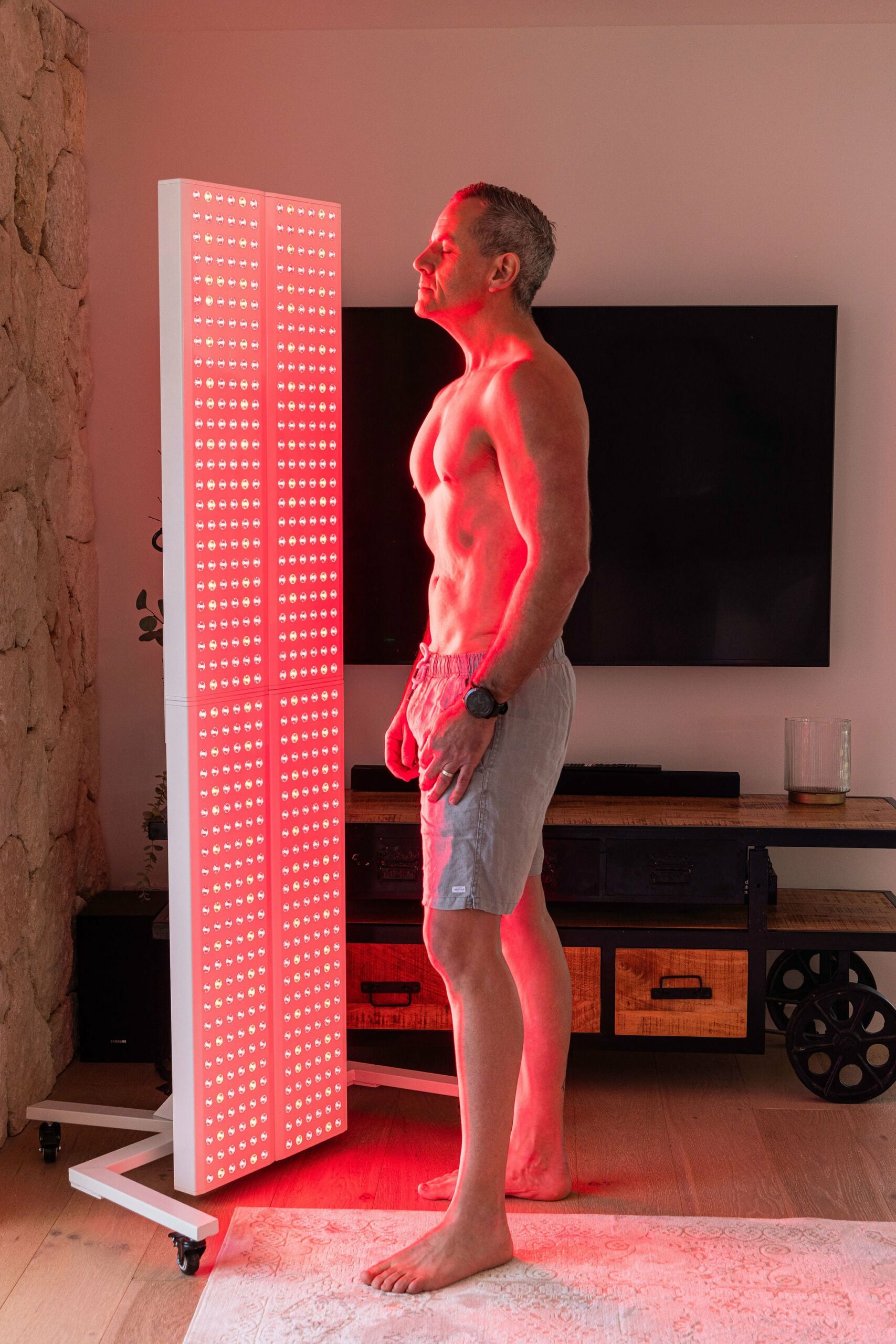
Red light is a type of visible light, Its wavelength falls between approximately 630 and 700 nanometers (nm) on the electromagnetic spectrum. Red light is often used in light therapy treatments for the skin, as it has been shown to have the most beneficial effects on skin cells and collagen production.
Near-infrared (NIR) light, on the other hand, has a longer wavelength than visible red light and falls between approximately 700 and 1200 nm on the electromagnetic spectrum. NIR light is not visible to the human eye, but it can penetrate deeper into the skin and other tissues than visible light, making it useful for a variety of therapeutic applications ranging from wound healing to inflammation reduction or improved circulation, among other benefits.
Different Red Light Therapy devices usually deliver slightly different wavelength ranges that research has shown to be the most effective for the concern they are being recommended for.
Red Light Therapy (RLT) strengthens the mitochondria, the cell’s powerhouse, where cell energy is created. Adenosine Triphosphate (ATP) is the critical energy-carrying molecule that is found in all living organisms. By optimizing the function of the mitochondria, more ATP is produced and with increased energy cells can function optimally.
This scientific breakthrough resulted in scientists discovering Red Light Therapy’s ability to stimulate and speed up tissue repair and growth. Red Light Therapy is now widely used for maintaining a healthy complexion, speeding up muscle recovery, reducing inflammation, improving sleep, treating neurological conditions, balancing hormones, treating pain, and even losing weight.
Research has also indicated that Red Light Therapy can help to restore cellular balance and alleviate the negative impact of blue light exposure. The prevalence of blue light in our society has become a growing concern as many individuals spend prolonged periods of time looking at screens on a daily basis.
Red Light Therapy (RLT) is also called:

Low-Level Light Therapy (LLLT), Photobiomodulation (PBM), Cold Laser Therapy, Photonic Stimulation, Low-Power Laser Therapy (LPLT), Phototherapy
A Brief History of Red Light Therapy
The journey of Red Light Therapy (RLT) has been both fascinating and impactful, starting from its humble origins in the late 19th century. Dr. Niels Ryberg Finsen, the pioneer in light therapy, made a groundbreaking discovery in 1896 that light could be harnessed to treat Lupus Vulgaris, a form of tuberculosis affecting the skin. His work, which led to the tangible healing of skin lesions, was so revolutionary that he received the Nobel Prize in Physiology in 1903.
Fast forward to 1960, Theodore H. Maiman invented the first operational laser, fulfilling Albert Einstein's theories on the principles of lasers laid out in 1917. This invention opened new avenues for RLT, allowing more precise applications.

NASA took an interest in Red Light Therapy in 1987, conducting experiments to examine its effects on plant growth in space missions. These studies hinted at RLT's potential to benefit not just human health but also broader ecological systems.
In the same vein, Endre Mester's work in 1967 set the stage for modern RLT applications.
His experimentation with low-level laser therapy on skin cancer effects demonstrated the technique's efficacy and led to FDA approval for wound healing in 2002.
The advent of LED technology in the 1990s was a game-changer, offering an efficient and cost-effective alternative to traditional light bulbs. This technological leap made light therapy more accessible to the general public, including its use in sports medicine where physical therapists reported quicker recovery times for sports-related injuries.
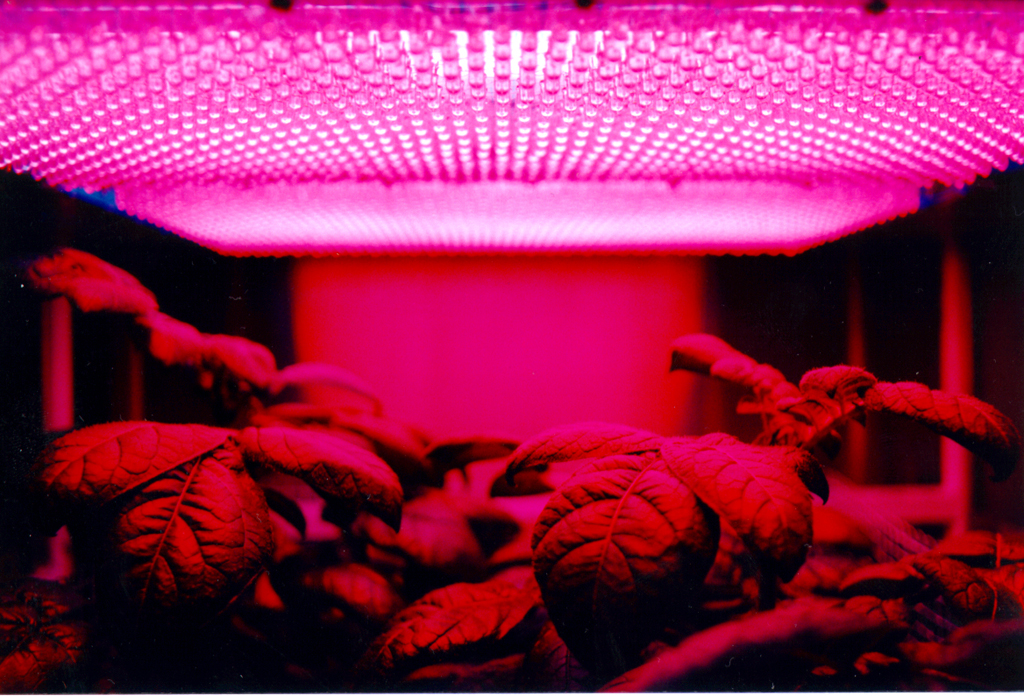
One of the most recent and exciting developments in RLT is its potential role in weight management. Studies indicate that Red Light Therapy can influence hormones like Leptin and Ghrelin, which play key roles in regulating appetite and metabolism. This makes RLT a promising avenue for non-invasive weight loss treatments.
As RLT continues to evolve, its applications keep expanding, crossing multiple disciplines from medicine to ecology. Researchers are continuously probing its potential, finding new ways to apply this age-old yet ever-advancing technology.
Our articles exclusively rely on primary sources of information, encompassing peer-reviewed medical journals and esteemed academic institutions.
- NASA. (2022, May 19). NASA Research Illuminates Medical Uses of Light. https://spinoff.nasa.gov/NASA-Research-Illuminates-Medical-Uses-of-Light
- American Association of Neurological Surgeons. (2023). Anatomy of the Brain. https://www.aans.org/en/Patients/Neurosurgical-Conditions-and-Treatments/Anatomy-of-the-Brain
- Gulati, A. (2015). Understanding neurogenesis in the adult human brain. Indian Journal of Pharmacology, 47(6), 583-584. https://doi.org/10.4103/0253-7613.169598
- Adolphs, R. (2009). The social brain: Neural basis of social knowledge. Annual Review of Psychology, 60, 693-716. https://doi.org/10.1146/annurev.psych.60.110707.163514
- Wang, Y., Pan, Y., & Li, H. (2020). What is brain health and why is it important? BMJ, 371, m3683. https://doi.org/10.1136/bmj.m3683
- Breijyeh, Z., & Karaman, R. (2020). Comprehensive review on Alzheimer’s disease: Causes and treatment. Molecules, 25(24), 5789. https://doi.org/10.3390/molecules25245789
- DeMaagd, G., & Philip, A. (2015). Parkinson’s disease and its management: Part 1: Disease entity, risk factors, pathophysiology, clinical presentation, and diagnosis. P T, 40(8), 504-510. https://www.ncbi.nlm.nih.gov/pmc/articles/PMC4517533/
- American Association of Neurological Surgeons. (2023). Parkinson’s Disease. https://www.aans.org/en/Patients/Neurosurgical-Conditions-and-Treatments/Parkinsons-Disease
- Kuriakose, D., & Xiao, Z. (2020). Pathophysiology and treatment of stroke: Present status and future perspectives. International Journal of Molecular Sciences, 21(20), 7609. https://doi.org/10.3390/ijms21207609
- Centers for Disease Control and Prevention, National Center for Injury Prevention and Control. (2023, April 20). Traumatic Brain Injury & Concussion (TBI). https://www.cdc.gov/traumaticbraininjury/get_the_facts.html
- Lacerte, M., Shapshak, A. H., & Mesfin, F. B. (2023). Hypoxic Brain Injury. StatPearls [Internet]. https://www.ncbi.nlm.nih.gov/books/NBK537310/
- World Health Organization. (2022, August 9). Optimizing brain health across the life course: WHO position paper. https://www.who.int/publications/i/item/9789240054561
- Bischof, G. N., & Park, D. C. (2015). Obesity and Aging: Consequences for Cognition, Brain Structure and Brain Function. Psychosomatic Medicine, 77(6), 697–709. https://doi.org/10.1097/PSY.0000000000000212
- Tafur, J., & Mills, P. J. (2008). Low-Intensity Light Therapy: Exploring the Role of Redox Mechanisms. Photomedicine and Laser Surgery, 26(4), 323–328. https://doi.org/10.1089/pho.2007.2184
- Wunsch, A., & Matuschka, K. (2014). A Controlled Trial to Determine the Efficacy of Red and Near-infrared Light Treatment in Patient Satisfaction, Reduction of Fine Lines, Wrinkles, Skin Roughness, and Intradermal Collagen Density Increase. Photomedicine and Laser Surgery, 32(2), 93–100. https://doi.org/10.1089/pho.2013.3616
- ampl, Y., Zivin, J. A., Fisher, M., Lew, R., Welin, L., Dahlof, B., . . . Oron, U. (2007). Infrared Laser Therapy for Ischemic Stroke: A New Treatment Strategy Results of the NeuroThera Effectiveness and Safety Trial-1 (NEST-1). Stroke, 38, 1843-1849. https://doi.org/10.1161/STROKEAHA.106.478230
- Giacci, M. K., Wheeler, L., Lovett, S., Dishington, E., Majda, B., Bartlett, C. A., . . . Fitzgerald, M. (2014). Differential Effects of 670 and 830 nm Red near Infrared Irradiation Therapy: A Comparative Study of Optic Nerve Injury, Retinal Degeneration, Traumatic Brain and Spinal Cord Injury. PLOS ONE. https://doi.org/10.1371/journal.pone.0104565
- Johnstone, D. M., Moro, C., Stone, J., Benabid, A.-L., & Mitrofanis, J. (2016). Turning On Lights to Stop Neurodegeneration: The Potential of Near Infrared Light Therapy in Alzheimer's and Parkinson's Disease. Frontiers in Neuroscience, 9, 500. https://doi.org/10.3389/fnins.2015.00500
- Naeser, M. A., Zafonte, R., Krengel, M. H., Martin, P. I., Frazier, J., Hamblin, M. R., Knight, J. A., Meehan, W. P., Baker, E. H. (2014). Significant improvements in cognitive performance post-transcranial, red/near-infrared light-emitting diode treatments in chronic, mild traumatic brain injury: open-protocol study. Journal of Neurotrauma, 31(11),1008-17. https://doi.org/10.1089/neu.2013.3244
- U.S. Department of Veterans Affairs. (2015, March 31). Can light therapy help the brain? VA study with 160 Gulf War Veterans will test red, near-infrared light. Office of Research & Development. https://www.research.va.gov/currents/spring2015/spring2015-7.cfm
- Hipskind, S. G., Grover, F. L., Fort, T. R., Helffenstein, D., Burke, T. J., Quint, S. A., Bussiere, G., Stone, M., & Hurtado, T. (2018). Pulsed Transcranial Red/Near-Infrared Light Therapy Using Light-Emitting Diodes Improves Cerebral Blood Flow and Cognitive Function in Veterans with Chronic Traumatic Brain Injury: A Case Series. Photomedicine and Laser Surgery. https://doi.org/10.1089/pho.2018.4489
- Hamblin, M. R. (2016). Shining light on the head: Photobiomodulation for brain disorders. BBA Clinical, 6, 113-124. https://doi.org/10.1016/j.bbacli.2016.09.002
- Hamblin, M. R. (2017). Photobiomodulation for traumatic brain injury and stroke. Journal of Neuroscience Research. https://doi.org/10.1002/jnr.24190
- Huang, N., Yao, D., Jiang, W., Wei, C., Li, M., Li, W., . . . Tong, Z. (2020). Safety and Efficacy of 630-nm Red Light on Cognitive Function in Older Adults With Mild to Moderate Alzheimer’s Disease: Protocol for a Randomized Controlled Study. Frontiers in Aging Neuroscience, 12, 143. https://doi.org/10.3389/fnagi.2020.00143
- Foo, A. S. C., Soong, T. W., Yeo, T. T., & Lim, K. L. (2020). Mitochondrial Dysfunction and Parkinson’s Disease—Near-Infrared Photobiomodulation as a Potential Therapeutic Strategy. Frontiers in Aging Neuroscience, 12. https://doi.org/10.3389/fnagi.2020.00089
- Yang, M., Yang, Z., Wang, P., & Sun, Z. (2020). Current application and future directions of photobiomodulation in central nervous diseases. Neural Regeneration Research. https://doi.org/10.4103/1673-5374.30048
- Liu, Y., Gong, S., Xia, S., Wang, Y., Peng, H., Shen, Y., & Liu, C. (2021). Light therapy: a new option for neurodegenerative diseases. Chinese Medical Journal, 134(6), 634-645. https://doi.org/10.1097/CM9.0000000000001301
- Hamilton, C., Liebert, A., Pang, V., Magistretti, P., & Mitrofanis, J. (2022). Lights on for autism: Exploring photobiomodulation as an effective therapeutic option. Neurology International, 14(4), 884-893. https://doi.org/10.3390/neurolint14040071
- Nizamutdinov, D., Ezeudu, C., Wu, E., Huang, J. H., & Yi, S. S. (2022). Transcranial near-infrared light in treatment of neurodegenerative diseases. Frontiers in Pharmacology, 13. https://doi.org/10.3389/fphar.2022.965788
- Torres-Martinez, N., Chabardes, S., & Mitrofanis, J. (2023). Lights for epilepsy: can photobiomodulation reduce seizures and offer neuroprotection? Neural Regeneration Research, 18(7), 1423-1426. https://doi.org/10.4103/1673-5374.360288
- Berman, M. H., Halper, J. P., Nichols, T. W., Jarrett, H., Lundy, A., & Huang, J. H. (2017). Photobiomodulation with near infrared light helmet in a pilot, placebo controlled clinical trial in dementia patients testing memory and cognition. Journal of Neurology and Neuroscience, 8(1). https://doi.org/10.21767/2171-6625.1000176
- Hu, D., Moalem-Taylor, G., & Potas, J. R. (n.d.). Red-light (670 nm) therapy reduces mechanical sensitivity and neuronal cell death, and alters glial responses following spinal cord injury in rats. Journal of Neurotrauma. https://doi.org/10.1089/neu.2020.7066
- Dmochowski, G. M., Shereen, A. D., Berisha, D., & Dmochowski, J. P. (2020). Near-infrared light increases functional connectivity with a non-thermal mechanism. Cerebral Cortex Communications, 1(1), tgaa004. https://doi.org/10.1093/texcom/tgaa004
- [34] Figueiro Longo, M. G., Tan, C. O., Chan, S., Welt, J., Avesta, A., Ratai, E., Mercaldo, N. D., Yendiki, A., Namati, J., Chico-Calero, I., Parry, B. A., Drake, L., Anderson, R., Rauch, T., Diaz-Arrastia, R., Lev, M., Lee, J., Hamblin, M., Vakoc, B., & Gupta, R. (2020). Effect of transcranial low-level light therapy vs sham therapy among patients with moderate traumatic brain injury: A randomized clinical trial. JAMA Network Open, 3(9), e2017337. https://doi.org/10.1001/jamanetworkopen.2020.17337
- Jara, C., Buendía, D., Ardiles, A., Muñoz, P., & Tapia-Rojas, C. (2021). Transcranial Red LED Therapy: A Promising Non-Invasive Treatment to Prevent Age-Related Hippocampal Memory Impairment. Hippocampus: Cytoarchitecture and Diseases. https://doi.org/10.5772/intechopen.100620
- Liebert, A., Bicknell, B., Laakso, E. L., Heller, G., Jalilitabaei, P., Tilley, S., Mitrofanis, J., & Kiat, H. (2021). Improvements in clinical signs of Parkinson’s disease using photobiomodulation: a prospective proof-of-concept study. BMC Neurology, 21, 256. https://doi.org/10.1186/s12883-021-02248-y
- Nizamutdinov, D., Qi, X., Berman, M. H., Dougal, G., Dayawansa, S., Wu, E., Yi, S. S., Stevens, A. B., & Huang, J. H. (2021). Transcranial Near Infrared Light Stimulations Improve Cognition in Patients with Dementia. Aging and Disease, 12(4), 954–963. https://doi.org/10.14336/AD.2021.0229
- Dougal, G., Ennaceur, A., & Chazot, P. L. (2021). Effect of Transcranial Near-Infrared Light 1068 nm Upon Memory Performance in Aging Healthy Individuals: A Pilot Study. Photobiomodulation, Photomedicine, and Laser Surgery, 39(10). https://doi.org/10.1089/photob.2020.4956
- Stepanov, Y. V., Golovynska, I., Zhang, R., Golovynskyi, S., Stepanova, L. I., Gorbach, O., Dovbynchuk, T., Garmanchuk, L. V., Ohulchanskyy, T. Y., & Qu, J. (2022). Near-infrared light reduces β-amyloid-stimulated microglial toxicity and enhances survival of neurons: mechanisms of light therapy for Alzheimer’s disease. Alzheimer's Research & Therapy, 14, 84. https://doi.org/10.1186/s13195-022-01022-7

